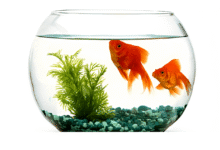
C-Section for Dogs: Everything You Should Know
Welcoming a new furry member into your family is an exciting and joyous experience. While most dogs give birth naturally, there are instances where a cesarean section, commonly known as a C-section, becomes necessary. This procedure can be a lifesaver for both the mother and her puppies. In this comprehensive guide, we’ll delve into the details of C-sections for dogs, exploring when and why they are performed, the procedure itself, the recovery process, and important considerations for dog owners.
Read More: Enucleation in Dogs
Understanding C-Section for Dogs
What is a C-Section?
A cesarean section, or C-sC-section for dogs, is a surgical procedure in which puppies are delivered through an incision in the mother dog’s abdomen and uterus. It is performed when natural birth is not possible or safe for either the mother or the puppies.
Why Are C-Sections Performed in Dogs?
C-sections for Dogs are necessary for situations where complications arise during pregnancy or labour. These complications could endanger the lives of the mother, the puppies, or both. Factors such as obstructed labour, fetal distress, and abnormalities in the birth canal can make C-sections for dogs the safest option.
Indications for a Canine C-Section
Obstructed Labor
Obstructed labour occurs when the puppies are unable to pass through the birth canal due to their size or positioning. This can lead to prolonged and painful labour for the mother and distress for the puppies.
Fetal Distress
Fetal distress involves a situation where the puppies’ health is compromised during labour. This could be due to a variety of reasons, including a lack of oxygen or nutrients.
Abnormalities in the Birth Canal
Certain anatomical abnormalities in the mother dog’s birth canal can prevent the puppies from being born naturally. This includes issues such as narrow pelvic bones.
The C-Section Procedure
Preoperative Preparations
Before a C-section for dogs, the veterinarian will conduct a thorough examination of the mother dog to assess her overall health. Blood tests, X-rays, and ultrasounds may be performed to evaluate the number and position of the puppies.
The Surgical Process
During the procedure, the mother dog is placed under anaesthesia. An incision is made in her abdomen, and then in her uterus, through which the puppies are carefully removed. This process requires precision to ensure the safety of both the mother and the puppies.
Anesthesia for Dogs
Anesthesia is a critical aspect of the C-section for dogs procedure. The type of anaesthesia used will depend on the dog’s health, the number of puppies, and other factors. It’s important to use anaesthesia that is safe for both the mother and the puppies.
Recovery and Aftercare
Immediate Postoperative Care
After the C-Section for Dogs, the mother dog will need time to recover from the surgery. She will be closely monitored as she wakes from anaesthesia. Pain medication and antibiotics may be prescribed to aid in her recovery.
Caring for the Mother Dog
During the recovery period, the mother dog will need a quiet and comfortable space to rest. It’s important to follow the veterinarian’s instructions for wound care, medication administration, and monitoring for any signs of complications.
Caring for the Newborn Puppies
Newborn puppies will require special care and attention. They should be placed with the mother as soon as possible to facilitate bonding. If the mother is unable to care for them, hand-rearing may be necessary.
Risks and Complications
Maternal Risks
Like any surgical procedure, C-sections carry risks for the mother dog. These risks include infection, excessive bleeding, and adverse reactions to anaesthesia.
Neonatal Risks
Newborn puppies may face challenges after a C-Section for Dogs. They might have difficulty breathing initially and may require extra assistance to nurse and stay warm.
Cost of a Canine C-Section
The cost of a C-Section for Dogs can vary widely depending on factors such as location, the veterinarian’s experience, and the dog’s condition. It’s important to discuss the potential costs with the veterinarian beforehand.
Breeds Predisposed to C-Sections
Certain dog breeds are more prone to needing C-sections due to their anatomical characteristics. Brachycephalic breeds with short noses and toy breeds with small pelvises often face challenges during natural birth.
Breeding Considerations
Selective Breeding and Genetics
Responsible breeding practices can help reduce the likelihood of C-sections. Breeding dogs with consideration for their genetics and physical attributes can mitigate the risks associated with difficult births.
Responsible Breeding Practices
Breeding should always be approached with the health and well-being of the dogs in mind. Avoiding overbreeding and focusing on the long-term health of the breed is essential.
Alternatives to C-Sections
Natural Whelping Techniques
In some cases, interventions during labour can facilitate natural birth. Techniques such as repositioning the puppies or administering oxytocin may help the mother give birth without surgery.
Breeding Assistance
Working with experienced veterinarians and breeders who specialize in canine reproduction can provide valuable insights and guidance to ensure the safety of the mother and her puppies during birth.
Consulting a Veterinarian
Recognizing Signs of Complications
Dog owners should be familiar with the signs of labour complications that might necessitate a C-Section for Dogs. These include prolonged labour, strong contractions without progress, and signs of distress in the mother or puppies.
Seeking Professional Advice
If a dog owner suspects that a C-Section for Dogs might be needed, it’s crucial to consult a veterinarian promptly. Early intervention can improve the chances of a successful outcome for both the mother and her puppies.
Emotional and Ethical Considerations
Emotional Impact on Dog Owners
The need for a C-Section for Dogs can be emotionally challenging for dog owners who had hoped for a natural birth. It’s important to be prepared for various birthing scenarios and to prioritize the health of the mother and puppies.
Ethical Aspects of Breeding
Breeding dogs should be done responsibly and ethically. Prioritizing the well-being of the animals over financial gains is essential to ensure the health and longevity of the breed.
Read More: Bordetella in Dogs
FAQ’s
- What is the recovery time for a dog after a C-section? Recovery time varies but usually takes around two to three weeks for the mother dog to fully heal.
- Can a dog give birth naturally after a C-section? Yes, some dogs can give birth naturally in subsequent pregnancies, but it depends on the reason for the initial C-section.
- Are there ways to prevent the need for a C-section in dogs? Responsible breeding practices, including selecting breeding pairs carefully, can reduce the likelihood of C-sections.
- How do I know if my dog is in labour? Signs of labour include restlessness, nesting behaviour, and more frequent contractions.
- Is it safe to breed brachycephalic dogs? Breeding brachycephalic dogs requires special care due to their predisposition to breathing difficulties; consulting a veterinarian is crucial.
Conclusion
The intricacies of C-sections for dogs are vital for responsible pet ownership. While a C-section might not be the preferred birthing method, it can be a life-saving procedure for both the mother and her puppies. Being aware of the indications, risks, and recovery process associated with C-sections empowers dog owners to make informed decisions for their furry companions. As the well-being of the mother and her puppies takes precedence, considering the necessity of a C-section for dogs is a testament to our commitment to their health and happiness.







